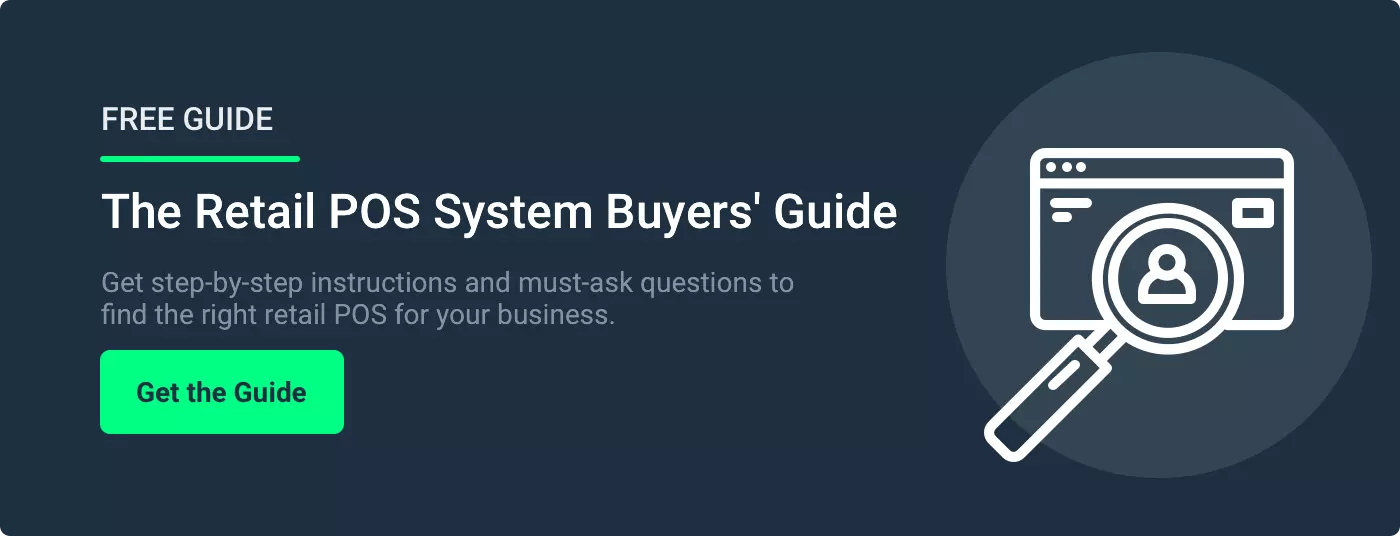Ask any small business owner and they’ll agree: the rewards of small business ownership are well worth the hard work.
By opening a retail store, you can become a cornerstone of your community, providing them with high-quality products and even better customer service. Beyond these feel-good benefits, you can also turn a significant profit.
But your retail store’s grand opening might seem impossibly far away. With so much to learn and so much to do, getting started might seem daunting.
That’s why we’ve created this quick but comprehensive guide to share how to open a retail store. We’ll walk you through every step of your small business journey — from crafting your business plan to making your first sale.
1. Design Your Brand
Before you make any other decisions, you need to carve out an identity for your retail store and decide what you’ll sell, who you’ll sell to, and what you’ll call your store.
Let’s take a closer look at each of these decisions and explore how to create a retail brand that appeals to customers and stands out from competitors.
Decide What To Sell
The most important choice you’ll make as you learn how to open a retail store is what to sell.
This decision isn’t just about what will be profitable; you should also keep your unique interests and expertise in mind.
If you keep up with all the latest fashion trends, you might have luck opening a boutique. If you’re a cigar connoisseur, perhaps you should launch a tobacco store. If you’re a proud resident of a tourist-friendly destination, consider opening a gift shop.
Specializing in products that you’re passionate about will help you connect with customers and build their trust in your brand.
Identify Your Ideal Customer
Now that you know what you’re selling, the next step is identifying and learning about your ideal customer. Who will your products appeal to? What are their likes and dislikes? What are their demographics?
Understanding this ideal customer will help you make informed decisions and ensure that your products, customer service, and marketing strategies appeal to the right people.
Choose a Name
You know what you’re selling and who your ideal customer is, and now it’s time to choose a name for your business that matches.
Naming your retail store is a fun but crucial decision. This name will be displayed in large letters on your sign, printed on all of your receipts, and passed around by word-of-mouth from happy customers.
Here are a few important steps to take before you commit to a store name:
- Ask for feedback from family and friends who fit your ideal customer’s profile.
- Thoroughly search the internet to make sure your store’s name is unique.
- Conduct a trademark search to learn whether you can get a trademark or service mark for your store’s name.
Renaming your business can be a costly and inconvenient endeavor, so choose wisely the first time.
2. Write a Business Plan
You’re one step closer to turning your retail store dreams into a reality! Now it’s time to make a concrete game plan for opening your doors.
Here are three essential elements of a comprehensive retail store business plan.
Secure Funding
Opening a retail store takes more than hard work and a great idea; it also requires a significant financial investment.
Whether you’ve been saving up for years or you plan to apply for loans, your business plan should cover exactly how you plan to secure funding for your small business.
Crunch the Numbers
Your business plan should also include a thorough financial plan, outlining how much you plan to spend and how much revenue you hope to bring in through sales.
Here are some key expenses to include in your prospective budget:
- Your location’s lease or purchase price
- Utilities and maintenance
- Initial and ongoing inventory
- Your employees’ pay and benefits
- Insurance
- Retail equipment like shopping carts, shelving, and point of sale (POS) technology
Don’t forget to include a buffer for any unexpected expenses.
File the Paperwork
Your next step in how to open a retail store is to make sure that your small business is legally compliant.
You likely need to apply for federal, state, and local business licenses and permits, so make sure to start the process as early as possible. Here’s what to expect during this process:
- Apply for an Employee Identification Number (EIN).
- Select your business structure and file appropriate tax documents.
- File for a business operation license with your state, county, or city.
- Apply for a seller’s license if needed. Depending on your inventory, you may need specific permits or licenses, especially if you plan to sell tobacco or alcohol products.
The Small Business Administration and your state government’s website are great sources of information about the legal requirements of owning a retail store.
3. Stock Your Shelves
With the groundwork laid, it’s time to stock your store’s shelves with products. Here are three ways to get started on the right foot when it comes to inventory management.
Connect With Vendors
Product vendors are a critical piece of the retail store puzzle. They supply your store with high-quality products, provide timely deliveries to prevent stockouts, and let you expand your offerings when new items hit the market.
That’s why it’s important to establish solid connections with vendors you can trust. Evaluate your options, negotiate your contract, and ensure constant communication throughout your business relationship.
Make an Inventory Management Plan
Having the best vendors at your side only matters if you have an effective inventory management strategy.
The easiest way to track your stock levels and prevent stockouts is to invest in a POS system with built-in inventory management features. This powerful tool monitors your stock levels in real time, detects shrinkage, and generates purchase orders when you’re running low on a certain product.
With the right POS system, you’ll be able to provide the largest selection to your customers, keep up with seasonal changes in your sales, and optimize your offerings to meet your shoppers’ wants and needs.
4. Attract Your First Customers
You’ve built a brand, secured a business license, and stocked your shelves — now all you need to do is attract shoppers.
Marketing is a critical part of how to open a retail store, letting you bring new customers through your door and keep them coming back. Here are three strategies to grow your customer base and keep the sales flowing.
Plan Promotions
There’s nothing customers love more than the opportunity to save money — which is why enticing promotions are a must-have for effective retail marketing.
Offer a mixture of buy one, get one (BOGO) deals, mix and match sales, flash sales, and storewide coupons to encourage customers to spend more during each visit to your store.
Launch a Customer Loyalty Program
Did you know that it’s four to five times more expensive to attract a new customer than to retain an existing one?
To keep your sales high and marketing costs low, we recommend launching a loyalty program. Your loyalty program should reward shoppers for choosing your business by letting them earn points and unlock exclusive perks. The more they spend, the more they’ll save — which means it’s a win-win.
Explore Other Marketing Opportunities
If you’re hoping to get a head start on attracting customers to your store, you can also leverage digital marketing techniques. Here are a few approaches to consider:
- Embrace the power of e-commerce and create an online store for your business.
- Use social media to share your small business story and highlight your product selection.
- Send text and email updates to customers using your POS system’s marketing integrations.
These strategies can expand your reach and help you spread the word about your retail store.
5. Invest in the Right POS System
If you’re still following along, you’ve probably noticed a common thread in all our tips: a powerful POS solution is the foundation of retail store success.
That’s why our final and most important tip is to choose a POS system designed to help your store survive and thrive. Here are just a few ways to use your store’s POS system:
- Keep your checkout lines short with features like customizable hotkeys and smart search.
- Track your inventory levels in real time, automatically generate purchase orders, and identify shrinkage before it affects your bottom line.
- Learn about your store’s performance and your customers with advanced sales reporting.
- Attract new customers by launching a loyalty program, planning enticing promotions, and using marketing integrations.
- Save time and simplify the payroll process with an employee time-tracking system.
The right POS system has the power to keep your store running smoothly and profitably, giving you more time to spend connecting with customers and growing your business.
How To Open a Retail Store With POS Nation
Congratulations! Now you know how to open a retail store, and you’re ready to take your first steps toward small business success.
Looking for support as you start your journey? See how this specialty retailer relied on POS Nation to simplify their operations, save time, and provide excellent customer service.
If you’re ready to see how our feature-rich software and industry-leading support team can give your retail store the best chance of success, schedule your live demo today!







 by Brian Sullivan
by Brian Sullivan


